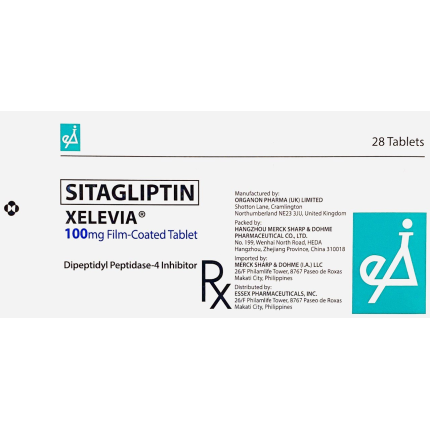All variations
Indications/Uses
Monotherapy: Adjunct to diet and exercise to improve glycemic control in patients with type 2 diabetes mellitus (DM).
Combination Therapy: Peroxisome proliferator-activated receptor γ (PPAR-γ) agonist (eg, thiazolidinediones) or metformin as initial therapy or when the single agent alone, with diet and exercise does not improve adequate glycemic control.
Combination with a sulfonylurea in patient with type 2 DM to improve glycemic control when treatment with single agent alone, with diet and exercise, does not provide ad equate glycemic control.
Combination with metformin and sulfonylurea, metformin and PPAR-γ agonists (thiazolidinediones) when dual therapy with these agents, does not provide adequate glycemic control.
Combination with insulin as adjunct to diet and exercise to improve glycemic control in combination with insulin (with or without metformin).
Combination Therapy: Peroxisome proliferator-activated receptor γ (PPAR-γ) agonist (eg, thiazolidinediones) or metformin as initial therapy or when the single agent alone, with diet and exercise does not improve adequate glycemic control.
Combination with a sulfonylurea in patient with type 2 DM to improve glycemic control when treatment with single agent alone, with diet and exercise, does not provide ad equate glycemic control.
Combination with metformin and sulfonylurea, metformin and PPAR-γ agonists (thiazolidinediones) when dual therapy with these agents, does not provide adequate glycemic control.
Combination with insulin as adjunct to diet and exercise to improve glycemic control in combination with insulin (with or without metformin).
Dosage/Direction for Use
Monotherapy or Combination Therapy with Metformin, Sulfonylurea, Insulin (with or without Metformin), PPAR-γ agonist, Metformin plus Sulfonylurea or PPAR-γ Agonist: 100 mg once daily.
Patients with Moderate Renal Insufficiency [Creatinine Clearance (CrCl) ≥30 to <50 mL/min, Approximately Corresponding to Serum Creatinine Levels of >1.7 to <3 mg/dL in Men and >1.5 to ≤2.5 mg/dL in Women]: 50 mg once daily.
Severe Renal Insufficiency CrCl <30 mL/min, Approximately Corresponding to Serum Creatinine Level of 3 mg/dL in Men and >2.5 mg/dL in Women or End-Stage Renal Disease (ESRD) Requiring Hemodialysis or Peritoneal Dialysis: 25 mg once daily. Maybe administered without regards to the timing of hemodialysis. Because there is a dosage adjustment based upon renal function, assessment of renal function is recommended prior to initiation and periodically, thereafter.
Patients with Moderate Renal Insufficiency [Creatinine Clearance (CrCl) ≥30 to <50 mL/min, Approximately Corresponding to Serum Creatinine Levels of >1.7 to <3 mg/dL in Men and >1.5 to ≤2.5 mg/dL in Women]: 50 mg once daily.
Severe Renal Insufficiency CrCl <30 mL/min, Approximately Corresponding to Serum Creatinine Level of 3 mg/dL in Men and >2.5 mg/dL in Women or End-Stage Renal Disease (ESRD) Requiring Hemodialysis or Peritoneal Dialysis: 25 mg once daily. Maybe administered without regards to the timing of hemodialysis. Because there is a dosage adjustment based upon renal function, assessment of renal function is recommended prior to initiation and periodically, thereafter.
Administration
May be taken with or without food.
Contraindications
Type 1 DM, diabetic ketoacidosis.
Special Precautions
Patients with renal insufficiency. Assessment of renal function. Lower dose of sulfonylurea or insulin maybe required to reduce the risk of hypoglycemia. Hypersensitivity reactions. To achieve plasma concentration of sitagliptin phosphate similar to those patients with normal renal function, lower dosages are recommended in patients with moderate and severe renal insufficiency, as well as in ESRD patients requiring hemodialysis or peritoneal dialysis. Patients should be informed of the characteristic symptoms of acute pancreatitis.
For patients with mild renal insufficiency (CrCl ≥50 mL/min, approximately corresponding to serum creatinine levels of ≤1.7 mg/dL in men and ≤1.5 mg/dL in women), no dosage adjustment for Xelevia is required.
Use in pregnancy & lactation: Use with caution in pregnancy and lactation.
Use in children: Use with caution in children <18 years.
Use in the elderly: Should be used with caution in the elderly.
For patients with mild renal insufficiency (CrCl ≥50 mL/min, approximately corresponding to serum creatinine levels of ≤1.7 mg/dL in men and ≤1.5 mg/dL in women), no dosage adjustment for Xelevia is required.
Use in pregnancy & lactation: Use with caution in pregnancy and lactation.
Use in children: Use with caution in children <18 years.
Use in the elderly: Should be used with caution in the elderly.
Use In Pregnancy & Lactation
Use with caution in pregnancy and lactation.
Adverse Reactions
Hypoglycemia (based on all reports of symptomatic hypoglycemia, concurrent glucose measurement was not required): Abdominal pain, nausea, vomiting, diarrhea , dyspepsia, flatulence; hypersensitivity reactions; exfoliative skin conditions including Stevens-Johnson syndrome; influenza, headache, cutaneous vasculitis, acute pancreatitis worsening renal function. Respiratory tract infection, nasopharyngitis, constipation.
Drug Interactions
Digoxin, cyclosporine.
Storage
Store at temperatures not exceeding 30°C.
MedsGo Class
Antidiabetic Agents
Features
Dosage
100mg
Ingredients
- Sitagliptin
Packaging
Film-Coated Tablet 1's
Generic Name
Sitagliptin Phosphate
Registration Number
DRP-5944-01
Classification
Prescription Drug (RX)
Reviews
No reviews found
Product Questions
Questions









